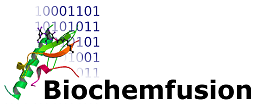Converting ChEMBL to sequence
This page gives you access to a subset of ChEMBL that has been converted to Protein Line Notation. A total of 27142 structures out of 39123 "peptide-like" structures have been successfully converted. More details on the conversion process can be found beneath the structure table.
20 randomly selected converted structures
| ChEMBL ID | ChEMBL structure | Converted sequence image | Proteax PLN (Protein Line Notation) |
|---|---|---|---|
| CHEMBL65081 | [NTerm_600]-FAAL-[NH2] name=CHEMBL65081 | ||
| CHEMBL207160 | [NTerm_134]-[Res_2674]AL-[CTerm_912] name=CHEMBL207160 | ||
| CHEMBL406875 | H-RPPG{d}[Res_733]SPFR-OH name=CHEMBL406875 | ||
| CHEMBL266668 | (cyclo)-[Res_1479]SG[Res_2310][Res_288][Res_2072]-(cyclo) name=CHEMBL266668 | ||
| CHEMBL439089 | [NTerm_1430]-G{d}R{d}K{d}K{d}R{d}R{d}Q{d}R{d}R{d}R{d}C-OH name=CHEMBL439089 | ||
| CHEMBL117230 | H-{d}C(1){d}RS{d}NT{d}L{d}C(1)-OH name=CHEMBL117230 | ||
| CHEMBL2382085 | [NTerm_820]-WFK-[CTerm_1072] name=CHEMBL2382085 | ||
| CHEMBL1172374 | [NTerm_1566]-RPY[Res_1354]L-OH name=CHEMBL1172374 | ||
| CHEMBL1075684 | H-[Res_854]GF[His(1-Trt)]-OH name=CHEMBL1075684 | ||
| CHEMBL173401 | [NTerm_820]-LLR-[Unknown_terminal_1] name=CHEMBL173401 inline-mod=C-terminal,[Unknown_terminal_1],H1,QkNGTRECAS+fGgC2/5gAr1QcALb/mAEAARhSAgABGg== | ||
| CHEMBL2369561 | [acetyl]-TPPTPSPC-[NH2] name=CHEMBL2369561 | ||
| CHEMBL501410 | H-ASKRVGVRN-OH name=CHEMBL501410 | ||
| CHEMBL79024 | [NTerm_858]-DVF-OH name=CHEMBL79024 | ||
| CHEMBL337567 | (cyclo)-V{d}LWD{d}M-(cyclo) name=CHEMBL337567 | ||
| CHEMBL494923 | [NTerm_1463]-RKR-[Unknown_terminal_1] name=CHEMBL494923 inline-mod=C-terminal,[Unknown_terminal_1],H1,QkNGTRECAa9RCgBu/aoALwcMAG79qgEAARhSAgABGg== | ||
| CHEMBL361252 | [NTerm_815]-[Res_1788]FRW-[NH2] name=CHEMBL361252 | ||
| CHEMBL1790366 | (cyclo)-[N(Me)aIle]G[MeVal]{d}[Res_2141]{d}A{d}A{d}[Res_78][MeVal]V{d}[Res_1793][Res_386]-(cyclo) name=CHEMBL1790366 | ||
| CHEMBL2407358 | H-L[Res_2421]F-[CTerm_810] name=CHEMBL2407358 | ||
| CHEMBL265503 | [acetyl]-FC(1)SDYSC(1)YLD-[NH2] name=CHEMBL265503 | ||
| CHEMBL2372167 | H-RPPGFSP[Res_939]R-OH name=CHEMBL2372167 |
Conversion process
All structures in the ChEMBL 19 database were downloaded as an SD file and, with the help of KNIME, probable "peptide-like" structures were identified. The "peptide-like" structures were defined as those containing a substructure of three connected glysines. This yielded a "peptide-like" subset of 39123 structures.
The peptide subset was loaded into a PostgreSQL database table and the Biochemfusion Proteax cartridge was used to convert structures, when possible, to sequences. The first conversion took 87 seconds and produced 27142 converted sequences.
You can download the full set of produced sequences (TAB-separated file with ChEMBL ID + PLN, ~11MB).
All found unknown residues and terminal structures were embedded as inline structures in the first round of produced PLN. The embedded structures were then de-duplicated and extracted. You can download the structure sets in gzip-ed SD file format from here:
- N-terminals, 1699 structures, 420 kB
- C-terminals, 1270 structures, 333 kB
- Residues, 3030 structures, 726 kB
143 of the unknown residue structures have been assigned well-defined names by NextMove Software's great Sugar & Splice tool (press the "Biologics" button). Many thanks to Roger Sayle at NextMove Software for processing this subset of residues with Sugar & Splice.
NextMove's residue names can be applied to a Proteax modification database (where the above SD files have been imported) by the following SQL script:
- Residue names update script, 143 name assigments, 18 kB
The currently produced PLN has been generated after all the above data has been loaded into Proteax's database of known structures. As you will see, most of the non-natural residues and terminals have auto-generated names based on sequential numbers.
